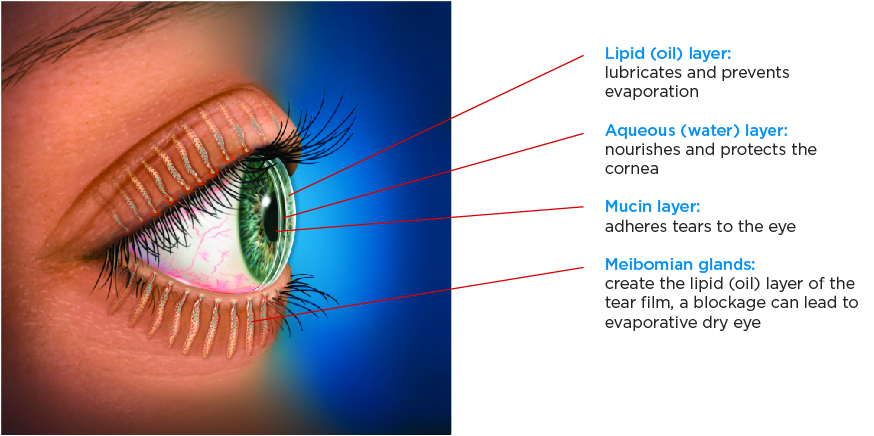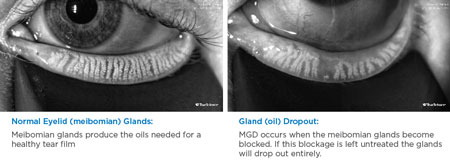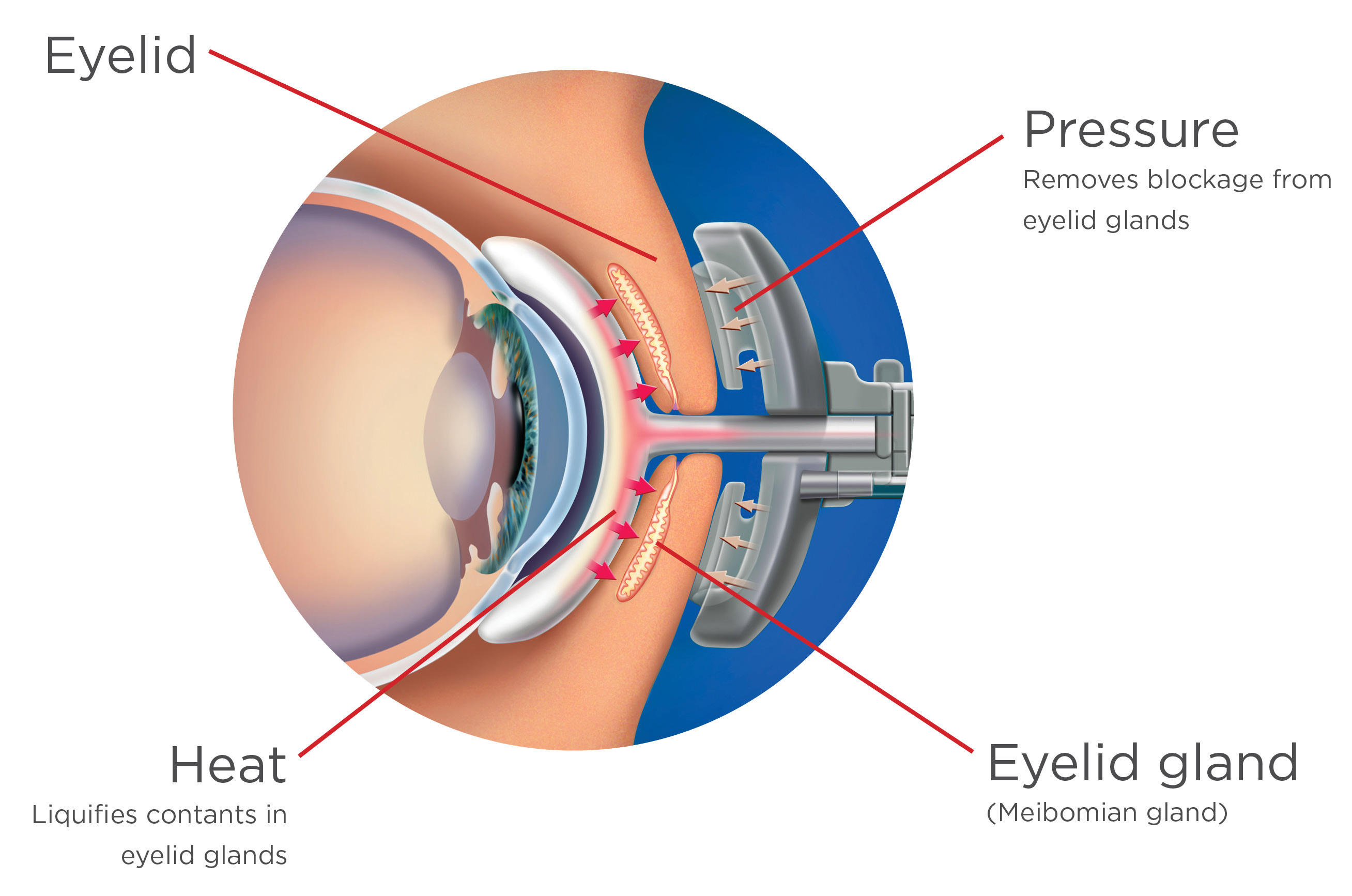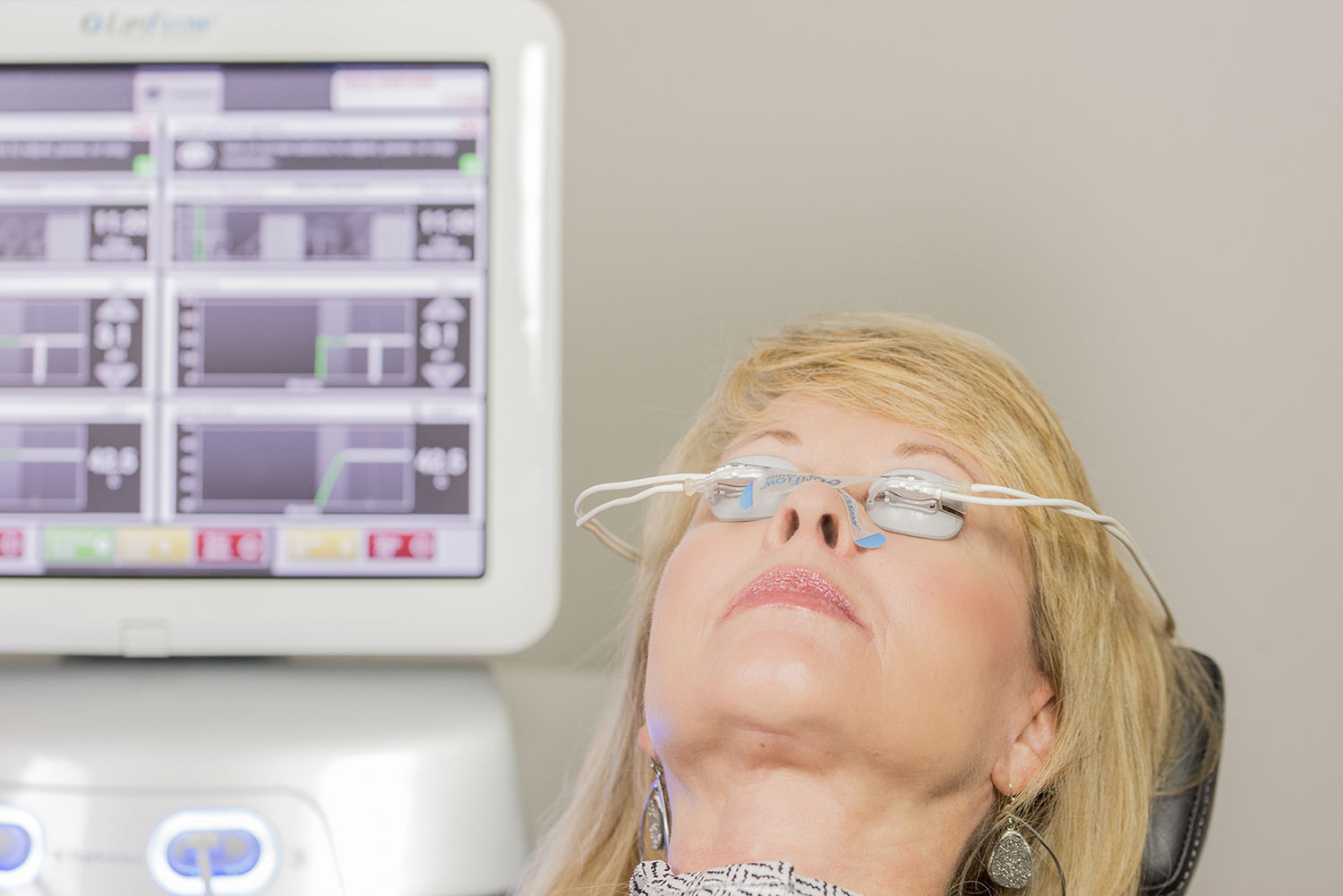New Windsor, NY 12553

Dry Eye Disease
Dry Eye and Meibomian Gland Dysfunction (MGD)
Dry Eye occurs when the eyes do not produce sufficient tears or the tears evaporate too quickly. Without proper treatment, inadequate tears can make daily activities frustrating. It can affect your personal and professional life, from reading to watching TV, to driving or working on the computer.
The most common form of Dry Eye is Evaporative Dry Eye, which affects 9 out of 10 (86%) Dry Eye cases. This form results from a shortage of oil in your tears caused by a blockage in your eyelid (Meibomian) glands. Without a sufficient oil content, the tears will evaporate faster than normal. This lack of tear oil is often referred to as Meibomian Gland Dysfunction (MGD).
What Is Dry Eye?
Some people do not produce enough tears or the appropriate quality of tears to keep the eye healthy and comfortable. This is known as dry eye. Tears are produced by two different methods. One method produces tears at a slow, steady rate and is responsible for normal eye lubrication. The other method produces large quantities of tears in response to eye irritation or emotions. Tears that lubricate are constantly produced by a healthy eye. Excessive tearing occurs when the eye is irritated by a foreign body, dryness or when a person cries.
What Are The Symptoms Of Dry Eye?
The usual symptoms include:
- stinging or burning eyes;
- scratchiness;
- stringy mucus in or around the eyes;
- excessive eye irritation from smoke or wind;
- excess tearing;
- difficulty wearing contact lenses.
Excess tearing from "dry eye" sounds illogical, but if the tears responsible for maintenance lubrication do not keep the eye wet enough, the eye becomes irritated. When the eye is irritated, the lacrimal gland produces a large volume of tears that overwhelm the tear drainage system. These excess tears then overflow from your eye.
What Are The Symptoms of MGD?
The usual symptoms include:
- burning eyes;
- dryness;
- sensitivity to light;
- blurred vision;
- discomfort in windy or dry conditions.
What Is The Tear Film?
A film of tears, spread over the eye by a blink, makes the surface of the eye smooth and clear. Without our tear film, good vision would not be possible. The tear film consists of three layers:
- an oily layer;
- a watery layer;
- a layer of mucus.
The oily layer, produced by the meibomian glands, forms the outermost surface of the tear film. Its main purpose is to smooth the tear surface and reduce evaporation of tears.

The middle aqueous (watery) layer makes up most of what we ordinarily think of as tears. This layer, produced by the lacrimal gland, cleanses the eye and washes away foreign particles or irritants.
The inner Mucin layer consists of mucus produced by the conjunctiva. Mucus allows the watery layer to spread evenly over the surface of the eye and helps the eye remain moist. Without mucus, tears would not stick to the eye.
What Causes Dry Eye?
Tear production normally decreases as we age. Although dry eye can occur in both men and women at any age, women are most often affected. This is especially true after menopause.
Dry eye also can be associated with other problems. For example, people with dry eyes, dry mouth and arthritis are said to have Sjogren's syndrome.
A wide variety of common medications — prescription and over-the-counter — can cause dry eye by reducing tear secretion. Be sure to tell your ophthalmologist the names of all the medications you are taking, especially if you are using:
- diuretics;
- beta-blockers;
- antihistamines;
- sleeping pills;
- medications for "nerves";
- pain relievers.
Since these medications are often necessary, the dry eye condition may have to be tolerated or treated with "artificial tears."
People with dry eye are often more prone to the toxic side effects of eye medications, including artificial tears. For example, the preservatives in certain eyedrops and artificial tear preparations can irritate the eye. Special preservative-free artificial tears may be required.
How Is Dry Eye Diagnosed?
A series of evaluations will be performed to determine if you have Dry Eye or MGD.
Our doctors are usually able to diagnose dry eye by examining the eyes. Sometimes tests that measure tear production may be necessary. One test, called the Schirmer tear test, involves placing filter-paper strips under the lower eyelids to measure the rate of tear production under various conditions. Another uses a diagnostic drop (fluorescein or rose bengal) to look for certain patterns of dryness on the surface of the eye.
We use the LipiView® Dry Eye Diagnostic and Visualization system to capture, archive, manipulate, and store digital images of specular (interferometric) observations of the tear film, which can be visually monitored and photographically documented. Click Here to learn more about Lipiview.

TearLab® Osmolarity System aids in accurate and early detection of Dry Eye Disease. The TearLab® Osmolarity System is intended to measure the osmolarity of human tears to aid in the diagnosis of dry eye disease in patients suspected of having dry eye disease, in conjunction with other methods of clinical evaluation.
Knowing what is causing your Dry Eye will help your doctor determine the best treatment option.
How Is Dry Eye Treated?
The right treatment for your dry eyes depends on a number of factors and the symptoms that you experience. There are many treatment options available to address the symptoms and work to increase or retain your own natural tears. The most common therapies are artificial tears, lubricant ointments, and punctal occlusion. In some cases, more advanced therapies, such as oral and topical medications and nutritional supplements are used.
Adding Tears
Eyedrops called artificial tears are similar to your own tears. They lubricate the eyes and help maintain moisture. Artificial tears are available without a prescription. There are many brands on the market, so you may want to try several to find the one you like best. Preservative-free eyedrops are available if you are sensitive to the preservatives in artificial tears. If you need to use artificial tears more than every two hours, preservative-free brands may be better for you. You can use the tears as often as necessary — once or twice a day or as often as several times an hour.
Conserving the Tears
Conserving your eyes' own tears is another approach to keeping the eyes moist. Tears drain out of the eye through a small channel into the nose (which is why your nose runs when you cry). Your ophthalmologist may close these channels either temporarily or permanently. The closure conserves your own tears and makes artificial tears last longer.
Other Methods
Tears evaporate like any other liquid. You can take steps to prevent evaporation. In winter, when indoor heat is on, a humidifier or a pan of water on the radiator adds moisture to dry air. Wrap-around glasses may reduce the drying effect of the wind, but are illegal to wear while driving in some states. Anything that may cause dryness, such as an overly warm room, hair dryers or wind, should be avoided by a person with dry eye. Smoking is especially bothersome. Some people with dry eye complain of "scratchy eyes" when they wake up. This symptom can be treated by using an artificial tear ointment or thick eyedrops at bedtime.
Use the smallest amount of ointment necessary for comfort, since the ointment can cause your vision to blur. Dry eye due to a lack of vitamin A in the diet is rare in the United States but is more common in poorer countries, especially among children. Ointments containing vitamin A can help dry eye if it is caused by unusual conditions such as Stevens-Johnson syndrome or pemphigoid. Vitamin A supplements do not seem to help people with ordinary dry eye.
How Is MGD Treated?
LipiFlow® Thermal Pulsation
Highland Ophthalmology offers LipiFlow® Dry Eye Treatment to apply localized heat and pressure therapy for our adult patients with chronic cystic conditions of the eyelids, including Meibomian Gland Dysfunction (MGD), also known as Evaporative Dry Eye or Lipid Deficiency Dry Eye.
LipiFlow works by applying directed energy to the eyelid near the affected glands — precisely targeted warmth from the back of the eyelid, and slight pressure from the front. This treatment is performed right in our office. The LipiFlow treatment can unblock glands, interrupt physical deterioration and, in most cases, provide symptom relief.


Click Here to learn more about LipiFlow® Thermal Pulsation.
